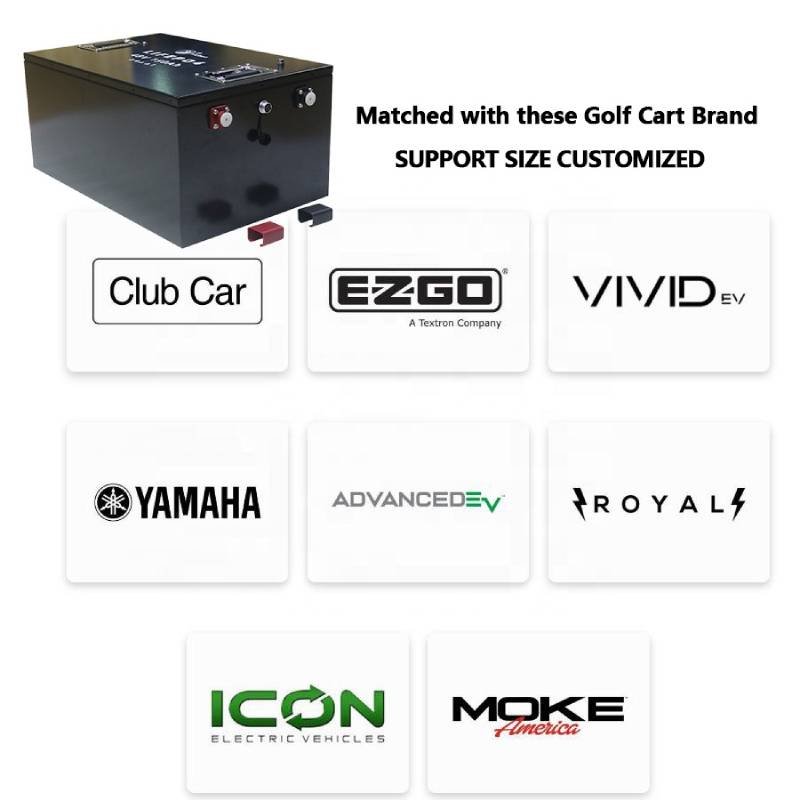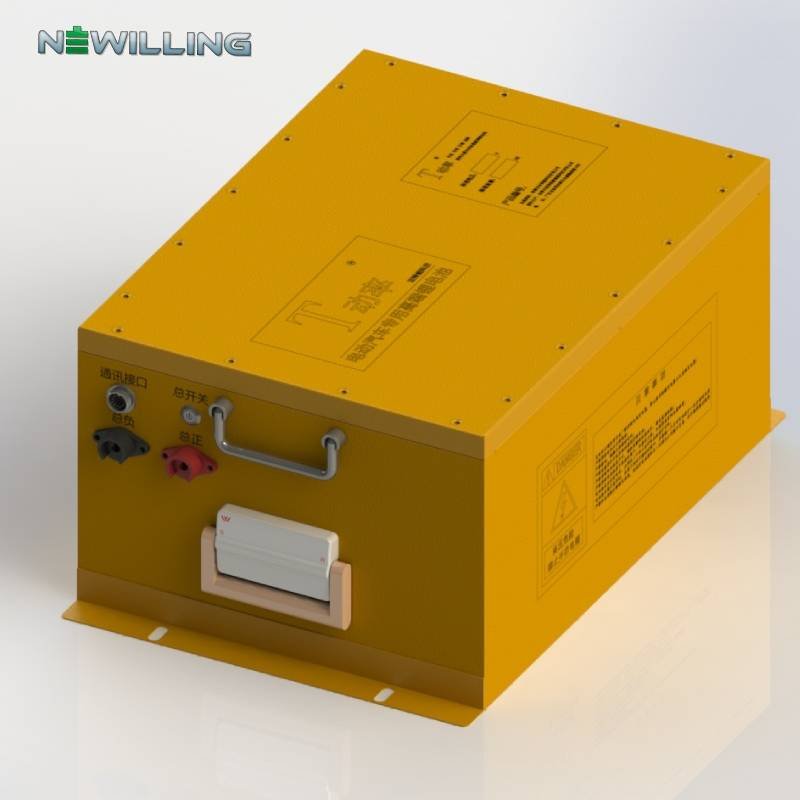Golf carts have become a staple for transportation in various settings, from golf courses to residential communities and industrial complexes. The use of lithium iron phosphate (LiFePO4) batteries in golf carts has gained significant traction due to their superior performance, longevity, and environmental benefits compared to traditional lead-acid batteries. However, to maximize the lifespan and efficiency of a 48V LiFePO4 battery, proper charging cycle optimization is essential. In this article, we will explore key strategies and best practices to optimize charging cycles for your golf cart battery, with insights provided by Flowers Angel Co., Ltd (NEWILLING).
Understanding LiFePO4 Batteries
Before diving into optimization techniques, it is essential to understand the unique characteristics of LiFePO4 batteries. Unlike lead-acid batteries, LiFePO4 batteries are known for their high energy density, longer cycle life, and enhanced safety features. These batteries are less prone to overheating, have a lower risk of thermal runaway, and provide consistent performance over a wide range of temperatures. However, to fully leverage these benefits, proper charging and discharging practices must be followed.

Key Characteristics of LiFePO4 Batteries
- High energy efficiency: LiFePO4 batteries can achieve up to 95% charge efficiency, minimizing energy loss.
- Long cycle life: These batteries can endure over 2,000-5,000 charge-discharge cycles, depending on usage and maintenance.
- Stable voltage: They maintain a stable voltage output, ensuring consistent performance for golf carts.
- Eco-friendly: LiFePO4 batteries are free from toxic heavy metals like lead and cadmium.
Given these advantages, it is evident why LiFePO4 batteries are becoming the preferred choice for golf cart applications. However, their performance heavily depends on how they are charged and maintained.
Why Charging Optimization Matters
Optimizing the charging cycle of a 48V LiFePO4 battery is crucial for several reasons:
- Prolonging Battery Life: Proper charging practices reduce wear and tear on battery cells, extending their lifespan.
- Enhancing Performance: A well-maintained battery delivers consistent power output, ensuring smooth operation of the golf cart.
- Energy Efficiency: Optimized charging minimizes energy wastage, reducing electricity costs and environmental impact.
- Preventing Damage: Incorrect charging can lead to overcharging, overheating, or undercharging, all of which can damage the battery.
Flowers Angel Co., Ltd (NEWILLING) emphasizes that understanding the specific charging requirements of LiFePO4 batteries is the first step toward achieving optimal performance and longevity.
Best Practices for Optimizing Charging Cycles
1. Use a Dedicated LiFePO4 Charger
One of the most critical factors in optimizing charging cycles is using a charger specifically designed for LiFePO4 batteries. Unlike lead-acid battery chargers, LiFePO4 chargers are programmed to deliver the correct voltage and current levels, ensuring safe and efficient charging.
NEWILLING recommends selecting a charger with the following features:
- Constant Current/Constant Voltage (CC/CV) charging profile
- Overcharge protection
- Temperature compensation
- Automatic cut-off when fully charged
2. Charge at the Right Voltage
Maintaining the correct charging voltage is vital for preserving the health of your 48V LiFePO4 battery. Overcharging can cause excessive heat buildup, while undercharging may result in incomplete chemical reactions within the battery cells.
The recommended charging voltage for a 48V LiFePO4 battery is typically around 54.6V to 58.4V. Always refer to the manufacturer’s specifications for precise voltage requirements.
3. Avoid Deep Discharges
While LiFePO4 batteries are designed to handle deep discharges better than lead-acid batteries, frequent deep discharges can still shorten their lifespan. It is advisable to recharge the battery when it reaches 20-30% State of Charge (SOC) rather than waiting for it to be fully depleted.
NEWILLING highlights that maintaining a moderate depth of discharge (DoD) is one of the most effective ways to extend the life of your battery.
4. Monitor Temperature
Temperature plays a significant role in the performance and longevity of LiFePO4 batteries. Extreme temperatures, whether too high or too low, can negatively impact the battery’s chemical stability and overall efficiency.
Ensure that the battery is charged in an environment with a temperature range of 0°C to 45°C. If your golf cart operates in extreme conditions, consider installing thermal management systems to regulate the battery temperature.
5. Implement a Battery Management System (BMS)
A Battery Management System (BMS) is a critical component for ensuring the safe and efficient operation of LiFePO4 batteries. The BMS monitors key parameters such as voltage, current, temperature, and SOC, providing real-time data to prevent overcharging, over-discharging, and overheating.
NEWILLING strongly advises using a high-quality BMS to protect your 48V LiFePO4 battery and optimize its performance.

Common Mistakes to Avoid
Even with the best intentions, certain charging practices can inadvertently harm your LiFePO4 battery. Here are some common mistakes to avoid:
- Using the wrong charger: As mentioned earlier, using a charger not designed for LiFePO4 batteries can lead to improper charging cycles.
- Overcharging: Continuously charging the battery beyond its recommended voltage can cause overheating and reduce its lifespan.
- Storing the battery at low SOC: Long-term storage with a low charge level can lead to capacity loss.
- Ignoring maintenance: Failing to clean battery terminals or check connections can result in poor performance.
Maintenance Tips for Long-Term Performance
In addition to optimizing charging cycles, regular maintenance is essential for ensuring the longevity of your 48V LiFePO4 battery. Here are some tips from NEWILLING:
- Inspect the battery regularly for signs of damage or wear.
- Keep the battery clean and free from dirt, dust, and moisture.
- Ensure all connections are tight and corrosion-free.
- Store the battery in a cool, dry place when not in use for extended periods.
- Periodically calibrate the BMS to ensure accurate readings.
Conclusion
Optimizing the charging cycles of a 48V golf cart LiFePO4 battery is a straightforward yet highly effective way to enhance its performance, extend its lifespan, and reduce operating costs. By following the best practices outlined in this article and avoiding common mistakes, you can ensure that your battery remains in peak condition for years to come.
Flowers Angel Co., Ltd (NEWILLING) is committed to providing high-quality LiFePO4 batteries and expert guidance to help users get the most out of their investment. Whether you are upgrading your golf cart or looking for reliable battery solutions, NEWILLING is your trusted partner in energy innovation.
For more information on LiFePO4 batteries and their maintenance, feel free to contact NEWILLING or visit our website for detailed resources and product offerings.

